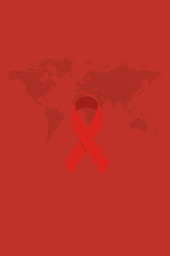
World Hepatitis Day is celebrated on yearly on the 28th of July – marking the birthday of the Nobel-prize winning scientist Dr Baruch Blumberg, who firstly discovered hepatitis B virus (HBV) and subsequently developed a diagnostic test and vaccine for the virus. It is a day to highlight the significant issue hepatitis still presents globally, as well as an opportunity to bring awareness of the need for a greater response globally to this disease – as summarised in a report by WHO in 2017. In this report they call for the elimination of viral hepatitis as a public health threat by 2030.
In this BMC Series highlights blog we aim to raise awareness of the integral hepatitis research our authors have been performing – providing key knowledge which will help inform ways to reduce hepatitis infection and mortality.
 BMC Infectious Diseases - Prevalence of vaccine-derived hepatitis B surface antibodies in children and adolescents in Germany: results from a population-based survey, 2014–2017
BMC Infectious Diseases - Prevalence of vaccine-derived hepatitis B surface antibodies in children and adolescents in Germany: results from a population-based survey, 2014–2017
Childhood vaccination against hepatitis B has been a standard health recommendation in Germany since 1995. According to the World Health Organization (WHO), a successful primary vaccination series is marked by a hepatitis B surface antibody (anti-HBs) level of ≥10 IU/L immediately following vaccination. Anti-HBs levels can vary depending on the number of doses, type of vaccine, and the interval between the last two doses. In 2021, Germany modified its vaccination guidelines, recommending three doses of polyvalent hepatitis B vaccines instead of four. In this study the authors aimed to determine the proportion of vaccinated children in Germany with different anti-HBs levels and assess whether the number of doses and compliance with the recommended interval between the last two doses impact achieving an anti-HBs level of ≥10 IU/L.
The authors utilized data from a national cross-sectional survey conducted between 2014 and 2017, involving children aged 3–17 years. A recommended vaccination schedule was defined as having at least six months between the last two doses and receiving three or more doses. Two logistic regression models were used to examine the relationship between the number of doses, adherence to the recommended schedule, and anti-HBs levels, taking into account the time since the last dose and the type of vaccine used.
The analysis revealed no significant association following a three-dose versus four-dose schedule and achieving anti-HBs levels of either ≥10 IU/L or ≥100 IU/L. This indicates that the reduction in the number of recommended doses did not affect the overall efficacy of the vaccination in terms of maintaining sufficient anti-HBs levels.
The authors findings suggest that in later childhood, anti-HBs levels are comparable whether children received three or four doses of the vaccine. This implies that the updated recommendation for a three-dose schedule does not compromise the anti-HBs levels among children in Germany. By ensuring continued research and monitoring, health authorities can better understand the effectiveness and durability of the hepatitis B vaccination program.
 BMC Primary Care - Barriers to hepatitis B virus screening of pregnant women in primary healthcare centers in Nigeria: health workers’ perspective
BMC Primary Care - Barriers to hepatitis B virus screening of pregnant women in primary healthcare centers in Nigeria: health workers’ perspective
In Nigeria, screening for hepatitis B virus (HBV) is a crucial aspect of antenatal care. Despite its importance, screening rates remain disappointingly low, especially at primary healthcare centres. To address this issue, a recent study explored the barriers to antenatal HBV screening from the perspective of health workers in Nigeria.
In this study the authors surveyed health workers, across three Nigerian states: Akwa Ibom, Anambra, and Kaduna. Using an open-ended questionnaire, the researchers gathered written responses on the perceived barriers to HBV screening and potential solutions. The data were analysed using an inductive thematic approach.
The study identified barriers at three levels: patient, provider, and health system. This included a lack of awareness among pregnant women about the importance of HBV screening and the unaffordability of HBV tests and high costs of antiviral treatment. As well as insufficient knowledge and training among health workers regarding HBV and a shortage of trained personnel to conduct HBV screenings. Finally, the study identified a lack of HBV test kits and vaccines at PHCs and inadequate infrastructure and resources to support widespread screening programs.
To overcome these barriers, health workers recommended several strategies. Firstly, to ensure HBV test kits and vaccines are readily available and free of charge at PHCs. Secondly, they recommended implementation of targeted awareness campaigns to educate pregnant women about HBV and the importance of screening. Finally, the suggested investing in training programs to enhance the knowledge and skills of health workers in HBV screening and management.
The authors concluded that multilevel barriers significantly impacted HBV screening rates among pregnant women in Nigerian PHCs. Addressing these barriers through comprehensive and sustainable interventions is crucial as Nigeria strives to eliminate HBV. By improving access to testing and vaccines, raising awareness, and enhancing health worker training, the country can make significant strides in safeguarding maternal and child health against HBV.
 BMC Infectious Diseases – Sustained virologic response improved the long-term health-related quality of life in patients with chronic hepatitis C: a prospective national study in China
BMC Infectious Diseases – Sustained virologic response improved the long-term health-related quality of life in patients with chronic hepatitis C: a prospective national study in China
Understanding the trends in health-related quality of life (HRQoL) among hepatitis C virus (HCV) patients is crucial for assessing the full impact of antiviral therapy on their well-being. In this study the authors aimed to investigate these trends and evaluate how antiviral therapy influences HRQoL over time.
This prospective multicentred observational study involved adults with HCV infection. The researchers collected sociodemographic data, clinical characteristics, and responses to EQ-5D questionnaires, which measure HRQoL. Following this, generalized estimating equation (GEE) models were used to analyse the associations between these variables and changes in HRQoL over time.
The authors concluded that achieving SVR markedly enhances the long-term HRQoL of HCV patients, particularly in the first few years following viral clearance. Sociodemographic factors, such as age, income, gender, and genotype, also play significant roles in determining long-term quality of life outcomes.
These findings highlight the crucial impact of antiviral therapy in improving the overall well-being of HCV patients. As healthcare providers work to manage and treat HCV, understanding the diverse factors that affect patients' quality of life can guide more personalized and effective treatment approaches.
 BMC Immunology - Characteristics of circulating immune cells in HBV-related acute-on-chronic liver failure following artificial liver treatment
BMC Immunology - Characteristics of circulating immune cells in HBV-related acute-on-chronic liver failure following artificial liver treatment
Liver failure induced by hepatitis B virus (HBV) is a critical condition often treated with artificial liver support systems (ALSS). In this study the authors aimed to explore the phenotypic diversity of immunocytes in patients with HBV-related acute-on-chronic liver failure (HBV-ACLF) before and after ALSS therapy.
To start their investigation HBV-ACLF patients undergoing ALSS therapy were enrolled, with improvement categorized based on ACLF Research Consortium scores. Demographic and laboratory data were collected during hospitalization. Immunological profiles of peripheral blood were analysed using mass cytometry before and after ALSS.
Out of the participants in the study, 12 patients showed clinical improvement while 10 did not. Post-ALSS analysis revealed higher circulating monocyte levels in non-improved patients, contrasting with lower γδT cell counts compared to the improved group. Further analysis identified 37 cell clusters, with significant decreases noted in effector CD8+ T cells, CD4+ TCM, CD4+ TEM, and inhibitory natural killer (NK) cells following ALSS therapy among HBV-ACLF patients.
Furthermore, results showed that ALSS therapy in HBV-ACLF patients is associated with significant changes in immune cell populations, notably affecting effector CD8+ T cells, CD4+ TCM and TEM cells, and inhibitory NK cells. Differences in monocytes and γδT cells were particularly pronounced between patients with varying treatment outcomes. These findings suggest that the phenotypic heterogeneity of lymphocytes and monocytes may influence the prognosis of ALSS therapy. Understanding these immunological changes could inform future strategies for immunotherapy in HBV-related liver failure.
This study underscores the complexity of immune responses in HBV-ACLF and highlights the potential for tailored immunotherapeutic approaches aimed at optimizing treatment outcomes in this patient population.
Follow the Topic
-
BMC Infectious Diseases

This journal is an open access, peer-reviewed journal that considers articles on all aspects of the prevention, diagnosis and management of infectious and sexually transmitted diseases in humans, as well as related molecular genetics, pathophysiology, and epidemiology.
-
BMC Primary Care

Previously known as BMC Family Practice, this is an open access, peer-reviewed journal that considers articles on all aspects of primary health care research.
-
BMC Immunology

This is an open access journal publishing original peer-reviewed research articles in molecular, cellular, tissue-level, organismal, functional, and developmental aspects of the immune system as well as clinical studies and animal models of human diseases.
Related Collections
With Collections, you can get published faster and increase your visibility.
Cancer immunology and immunotherapy
BMC Immunology is calling for submissions to our Collection on Cancer immunology and immunotherapy. Cancer immunology and immunotherapy have emerged as pivotal areas in cancer research, focusing on understanding the complex interplay between the immune system and cancer cells. This field encompasses the study of tumor immunology, immune evasion mechanisms, and the development of immunotherapeutic strategies to harness the immune system's potential to target and eliminate cancer cells.
Advancing our collective understanding is crucial for the development of novel immunotherapies, such as immune checkpoint inhibitors and chimeric antigen receptor (CAR) cell therapies, which have shown remarkable efficacy in treating various types of cancer. Furthermore, research in this area has elucidated the role of the tumor microenvironment in modulating immune responses and has provided insights into mechanisms of immune evasion and tumor metastasis.
Potential topics for submission include, but are not limited to:
- Personalized cell therapies, including various CAR cells
- Cancer prevention such as vaccines
- Tumor microenvironment and metastasis
- iImmunoediting: elimination, equilibrium, and escape
- Inflammaging - the bidirectional relationship between cancer and inflammation
This Collection supports and amplifies research related to SDG 3: Good Health and Well-being.
All manuscripts submitted to this journal, including those submitted to collections and special issues, are assessed in line with our editorial policies and the journal’s peer-review process
Publishing Model: Open Access
Deadline: Jun 09, 2026
Primary care workforce and systems
BMC Primary Care is calling for submissions to our Collection, Primary care workforce and systems. The primary care workforce is integral to the healthcare system, serving as the first point of contact for individuals seeking medical attention. This Collection aims to explore the dynamics of the primary care workforce, including its composition, distribution, and the systems that support it. As healthcare needs evolve, understanding the role of healthcare providers and the models of primary care delivery is essential for ensuring quality care and improving health outcomes across diverse populations.
Addressing the challenges faced by the primary care workforce, such as shortages and burnout, is crucial for enhancing patient access to essential services. Recent advancements in integrated care models and innovative workforce strategies have shown promise in mitigating these issues. By focusing on enhancing training, retention, and support for primary care providers, we can improve the overall efficiency and effectiveness of healthcare delivery, ultimately benefiting patients and communities alike.
In this Collection, we welcome submissions that span a wide array of topics, including but not limited to:
-Strategies for addressing workforce shortages
-Innovative primary care models
-Enhancing patient access to primary care
-Integrated care approaches
All manuscripts submitted to this journal, including those submitted to collections and special issues, are assessed in line with our editorial policies and the journal’s peer review process. Reviewers and editors are required to declare competing interests and can be excluded from the peer review process if a competing interest exists.
Publishing Model: Open Access
Deadline: Feb 20, 2026





Please sign in or register for FREE
If you are a registered user on Research Communities by Springer Nature, please sign in